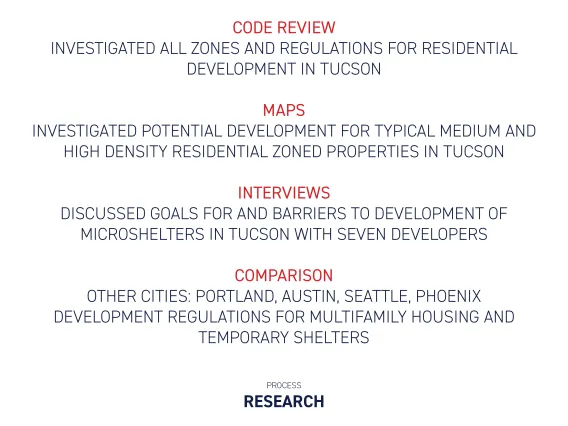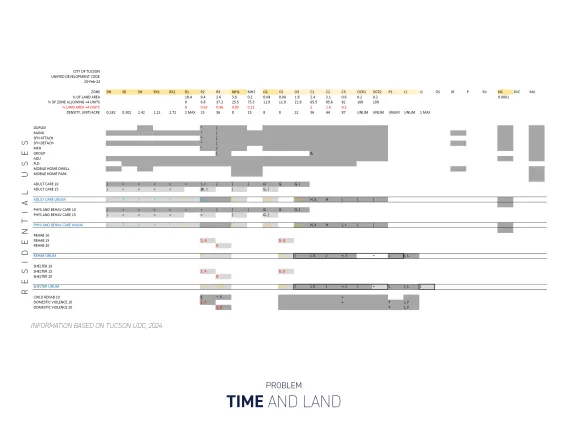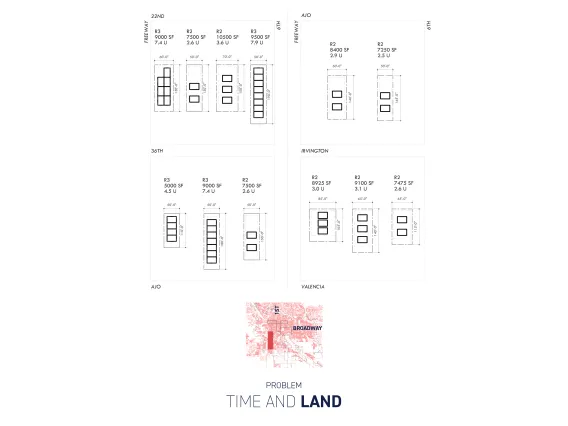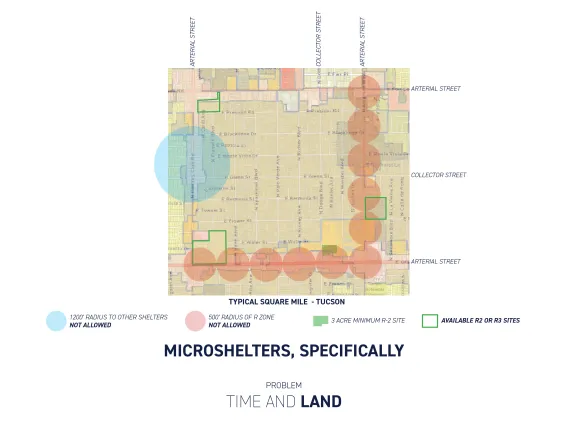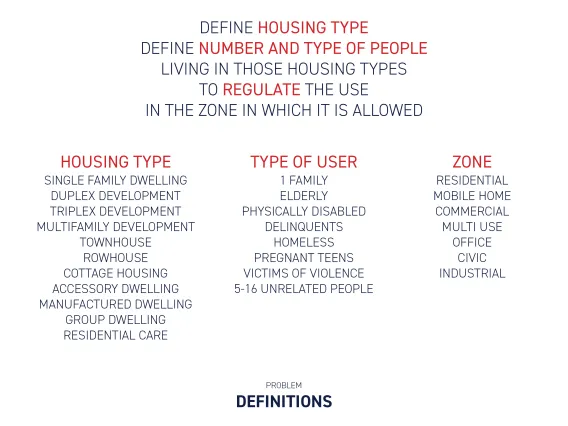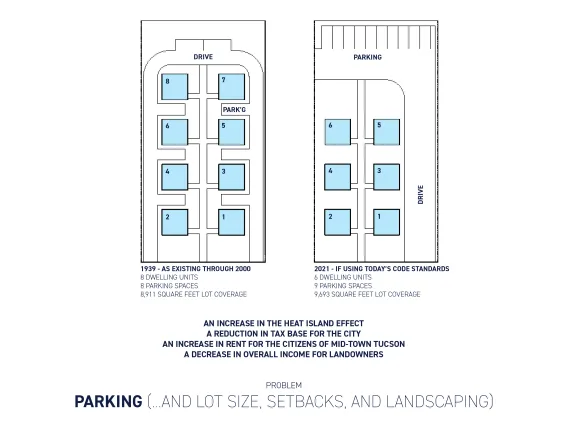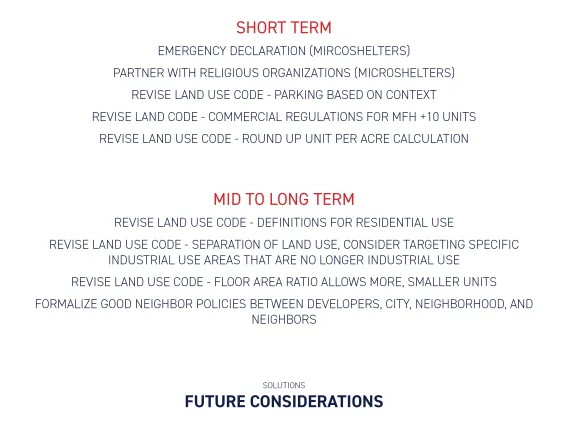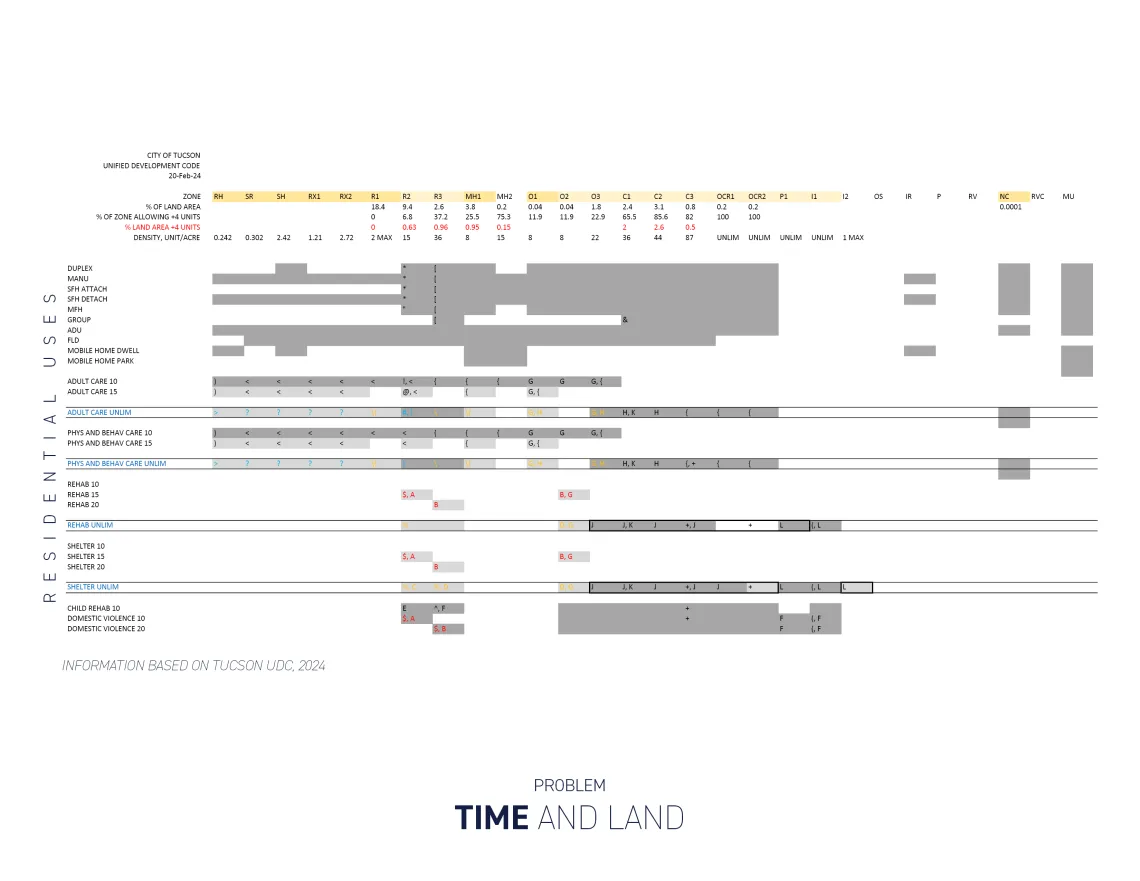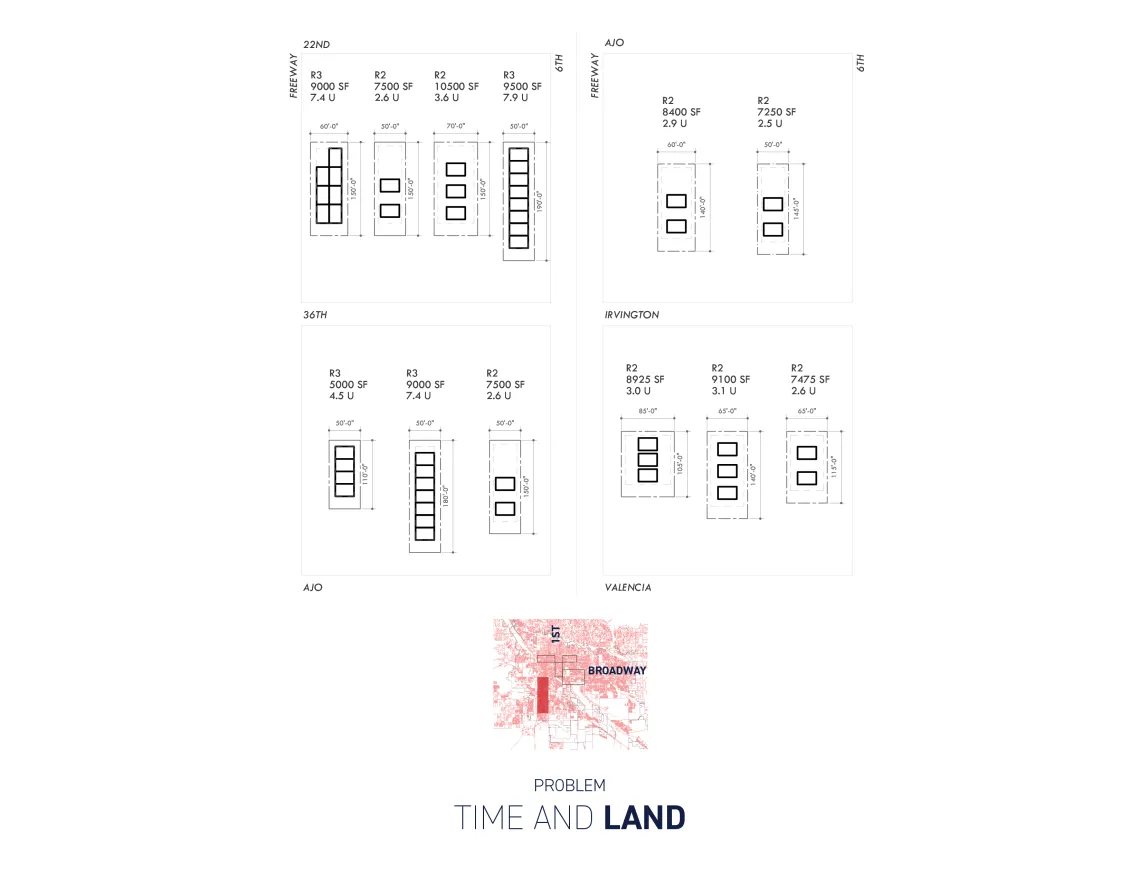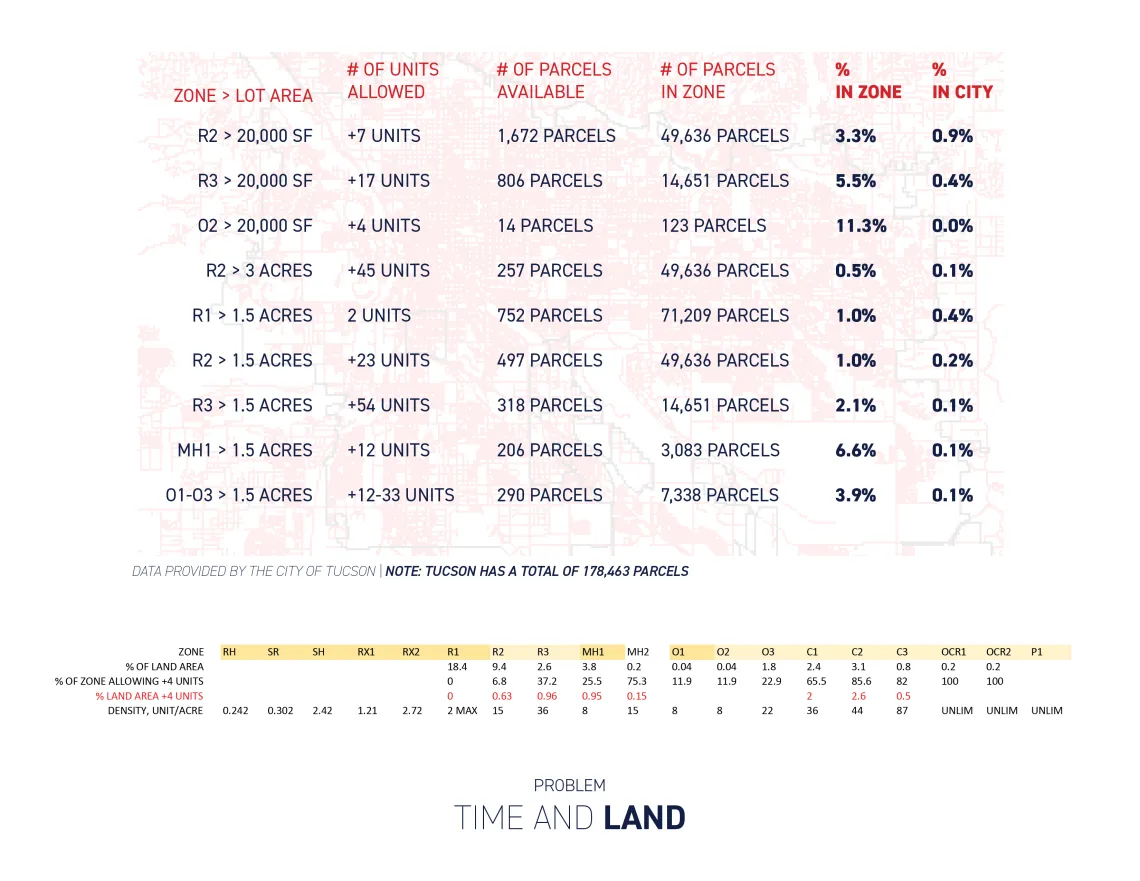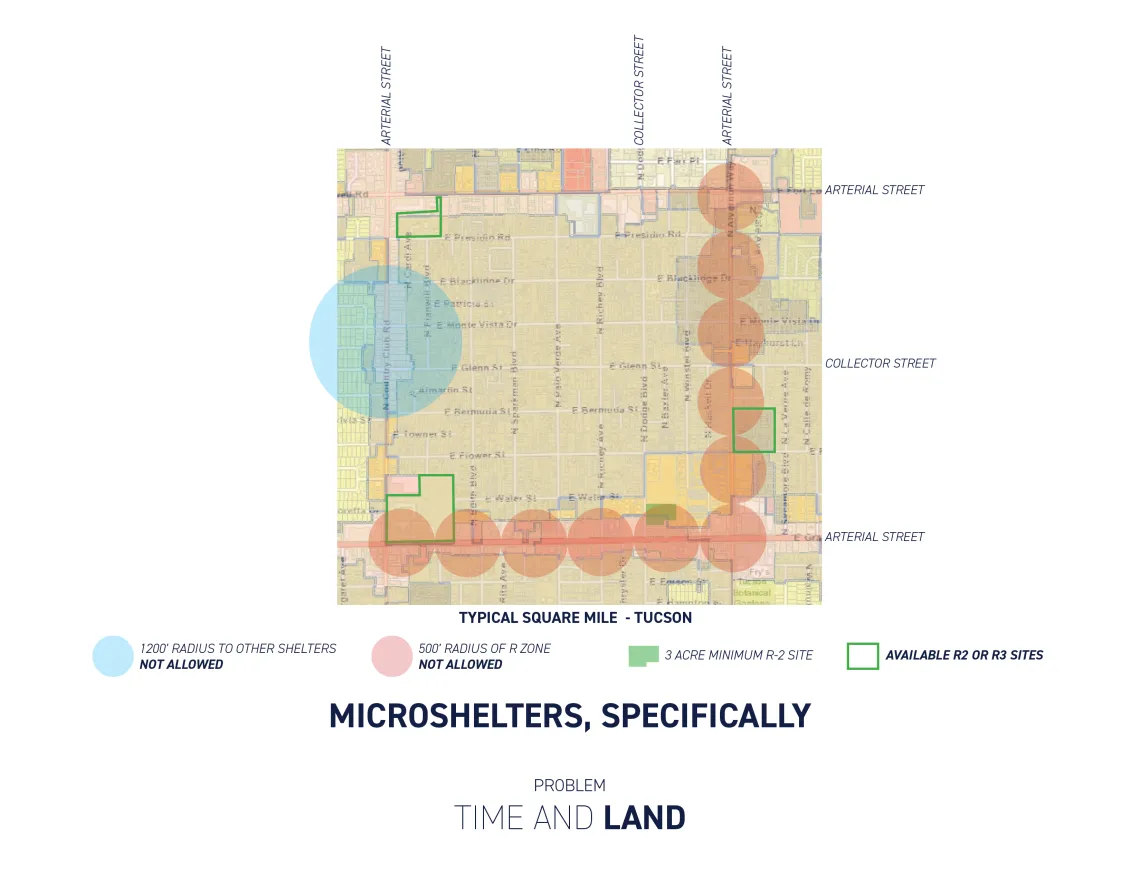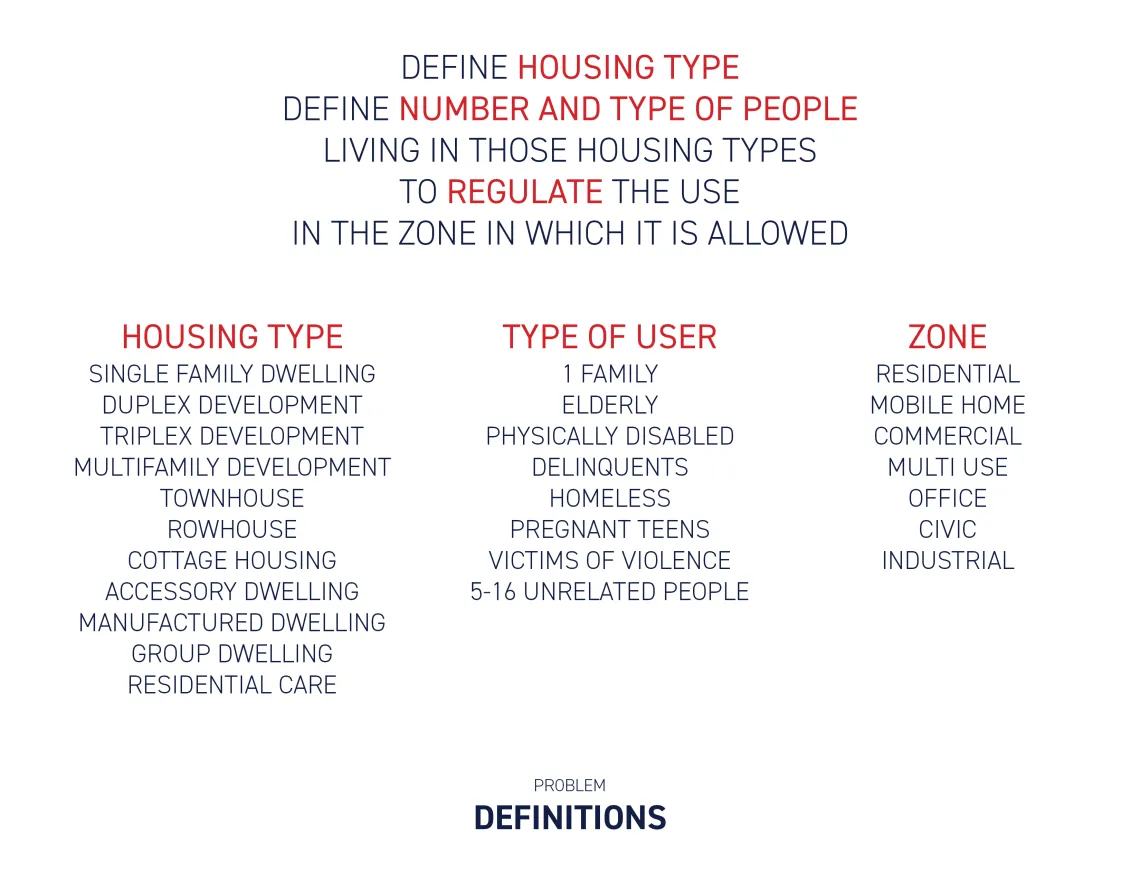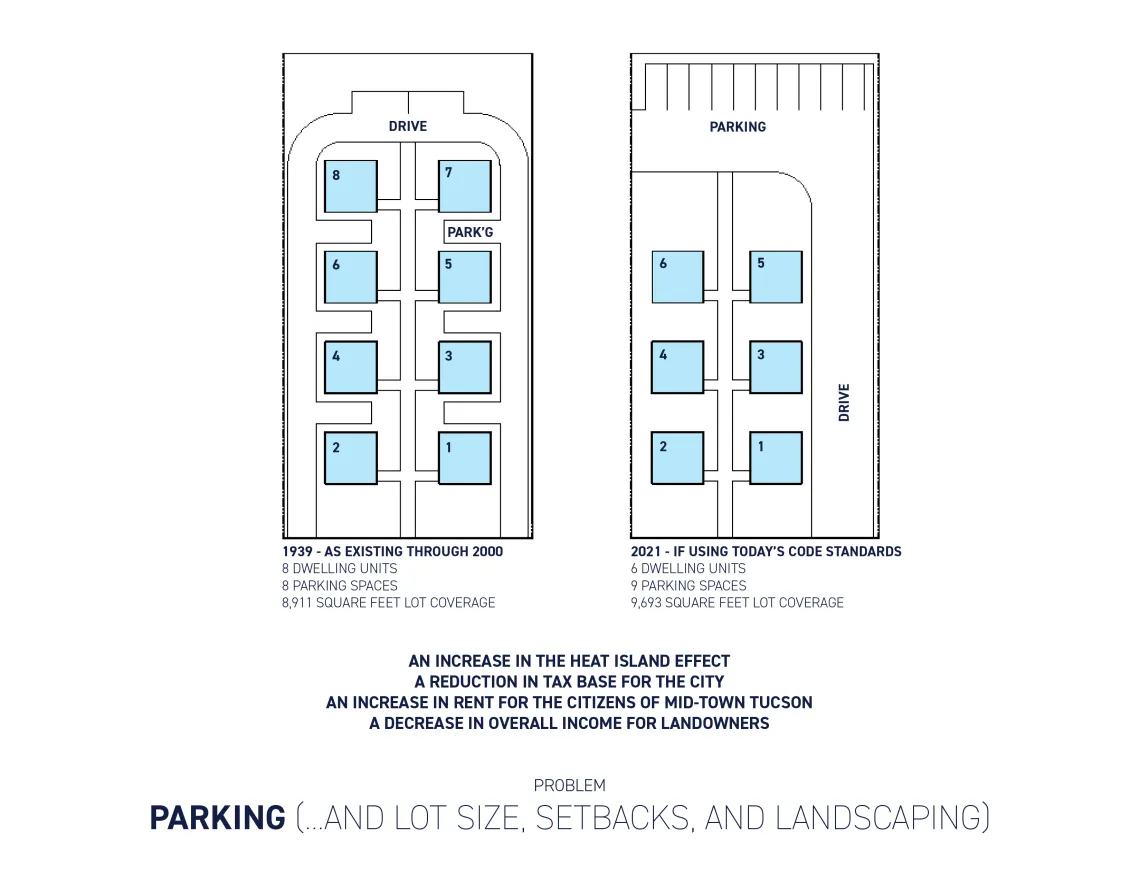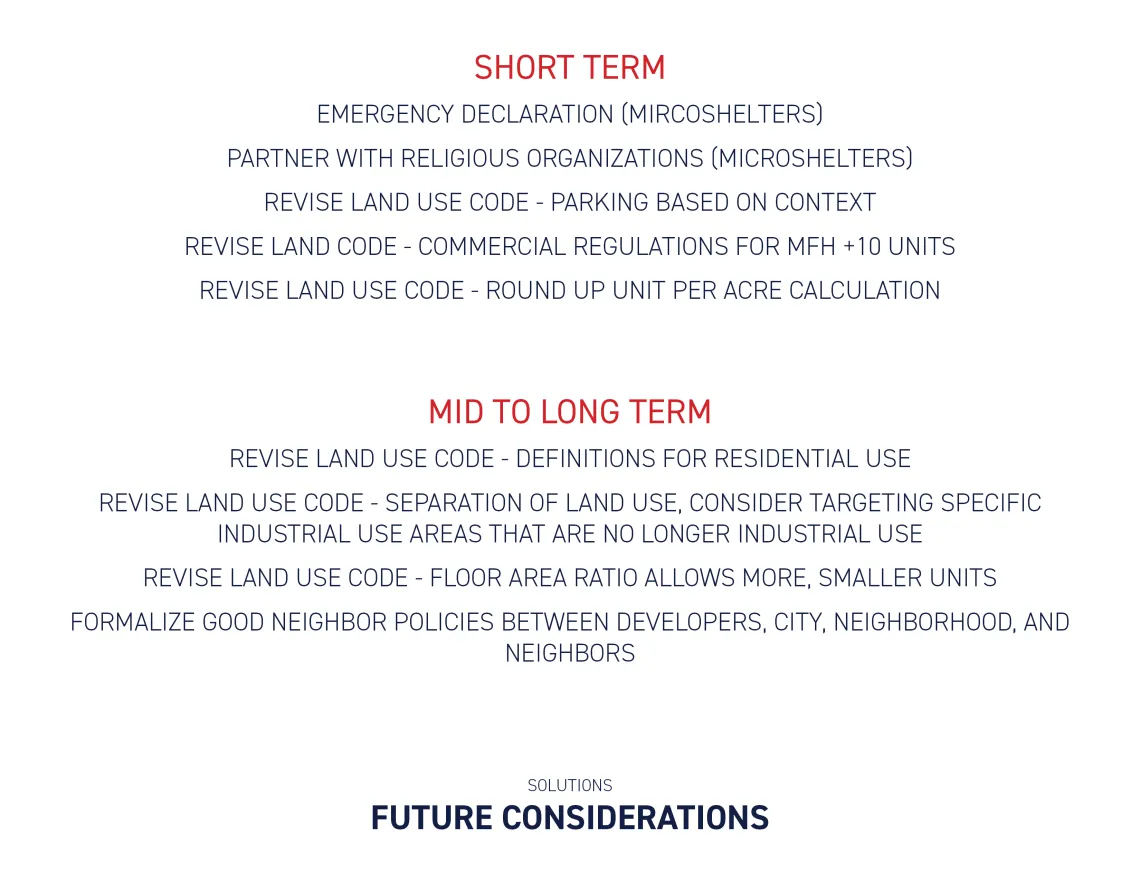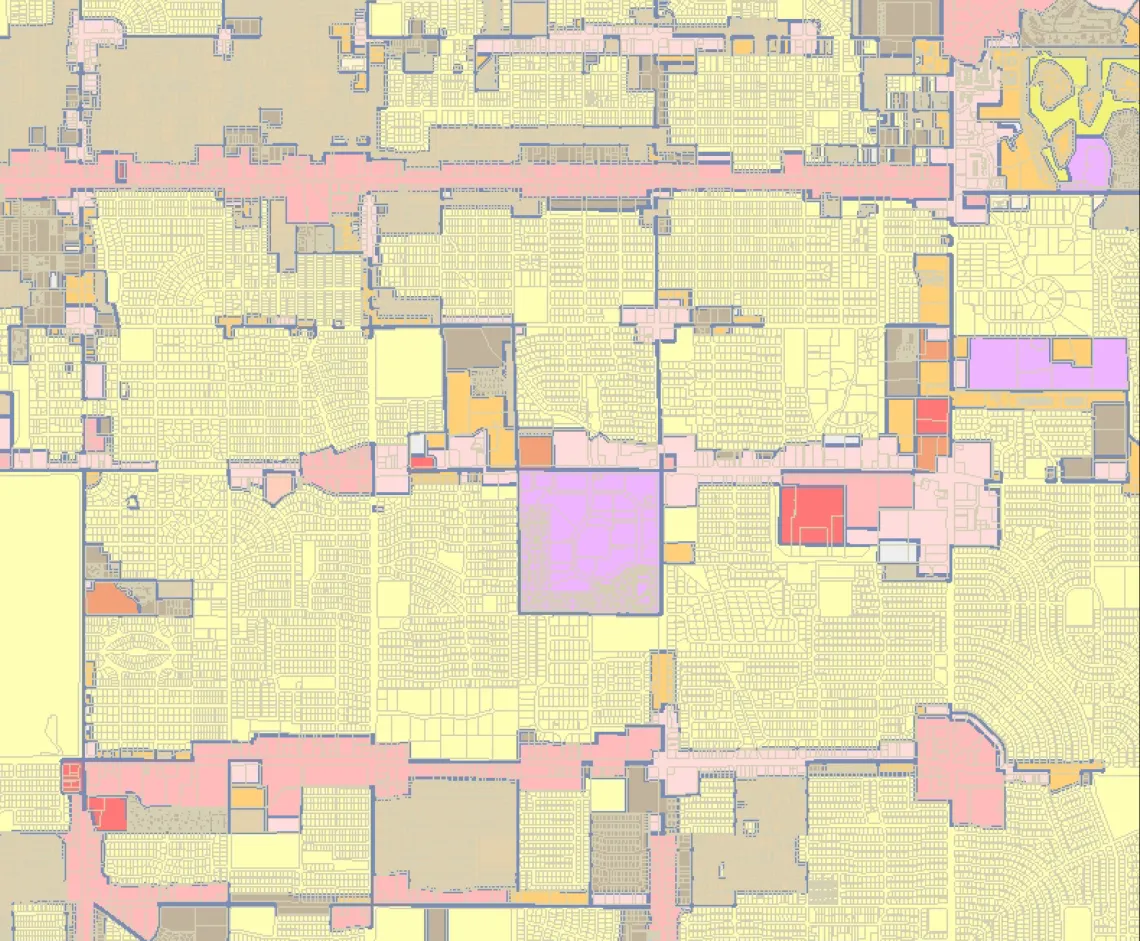
Zoning Segregation: Yellow = R-1, where single-family houses are the predominant by-right use
Project Team
- Bill Mackey
- Greg Veitch
- Stephanie Barrett, B. Arch student
Community Partners and Resources
- City of Tucson, Planning and Development Services Department
Daniel Bursuck
Koren Manning
Kristina Swallow
- City of Tucson, Ward 6
Ann Charles
Steve Kozachik
- City of Tucson, Ward 3
Katie Bolger
CJ Boyd
Kevin Dahl
Project Details
Funding: Provided by Kaimas Foundation
Where: Tucson, Arizona
When: January - June 2024
Project Overview
The Ward 6 Council office of the City of Tucson and the Kaimas Foundation engaged the Drachman Institute in the fall of 2023 to investigate and recommend improvements to the City of Tucson’s land use code in facilitating the development of Mini-homes and Micro-shelter
communities. The issue is that Mini-home and Micro-shelter developments take too long to go through the site entitlement process; either a rezoning or “Planned Area Development” (PAD) process is required, adding 8 months to a year to the length of approval time. This extra time adds a burdened cost to the projects and stress to the development team and future occupants.
Mini-homes and Micro-shelter developments are not the same thing. Mini-homes can be market
rate or affordable housing projects. They can be condominium-type plats or straight up rentals. Micro-shelters are specifically developments for transient housing provided on an emergency basis. They include services on site supporting the residents with medical and social needs. The users of these facilities are typically homeless people. At first, this study focused primarily on the development of Micro-shelters, but as information was uncovered and presented to the working group, the investigation expanded into the medium and high density residential zones for the City of Tucson – expanding into not only Mini-home developments, but also into residential development in R-2 and R-3 zones.
The City of Tucson land use code and its application to the actual land in Tucson makes Multi-family Housing a complicated use to develop within Tucson’s city limits. It has definitions separating the number and type of people in residential architecture, it places more restrictions and regulations on developments as they increase in density or decrease in the inhabitants’ ability to autonomously function in society, and there is the lack of developable land for anything beyond 4 residential units. As the housing crisis continues - a crisis affecting not only homeless populations but middle class existing homeowners - we hear again and again that reform is needed. The Arizona State Legislature has passed legislation stripping away municipalities’ governance over zoning codes. The state of California, Minneapolis, Minnesota, and Palisades Park, New Jersey have modified single family residential zoning rules. Municipalities are working with religious organizations to develop housing for homeless populations on their properties.
Project Outcomes and Recommendations
White Paper and Presentation to City of Tucson Planning and Development Services, Ward VI and Ward III Summer 2024
- Short term recommendations
- Emergency Declaration: Declare a State of Emergency for temporary housing for homeless populations. Utilize City of Tucson owned properties to temporarily develop sites while transitional housing is constructed or obtained.
- Partner With Religious Organizations: Many cities are allowing religious organizations to site Micro-Shelter developments on their property. Underutilized spaces, such as parking lots, can be used for temporary housing for the homeless.
- Revise Land Use Code - Density Calculations: Consider rounding up for fractional density calculations.
- Revise Land Use Code - Parking: Consider allowing developments to tailor the parking requirements to the use and context through new code tools or a simplified Individual Parking Plan option.
- Revise Land Use Code - Commercial Regulations: Consider allowing any multifamily residential development of up to 5 units be considered “residential use.” Currently 3 or more units is considered “commercial use,” which impacts the development regulations.
- Mid to long term recommendations
- Revise Land Use Code - Definitions:
- 1. Consider an interrogation of how residential use is defined. Are all the ways in which humans dwell being captured by the definitions? Do the definitions restrict innovative housing types?
- 2. Consider how the development of sites for vulnerable populations that are unable to care for themselves are restricted by the definitions and associated regulations.
- Revise Land Use Code - Floor Area Ratio: Consider adding/replacing Floor Area Ratio calculations to/for lot coverage and density calculations.
- Revise Land Use Code - Separation Of Land Use: Consider residential use in targeted industrial zoned areas.
- Formalize Good Neighbor Policies: Consider creating a system in which neighbors and developers are required to engage in a conversation about expectations and implications for a proposed development.
- Revise Land Use Code - Definitions:
Project Gallery
Click image to view larger size and begin slideshow:



